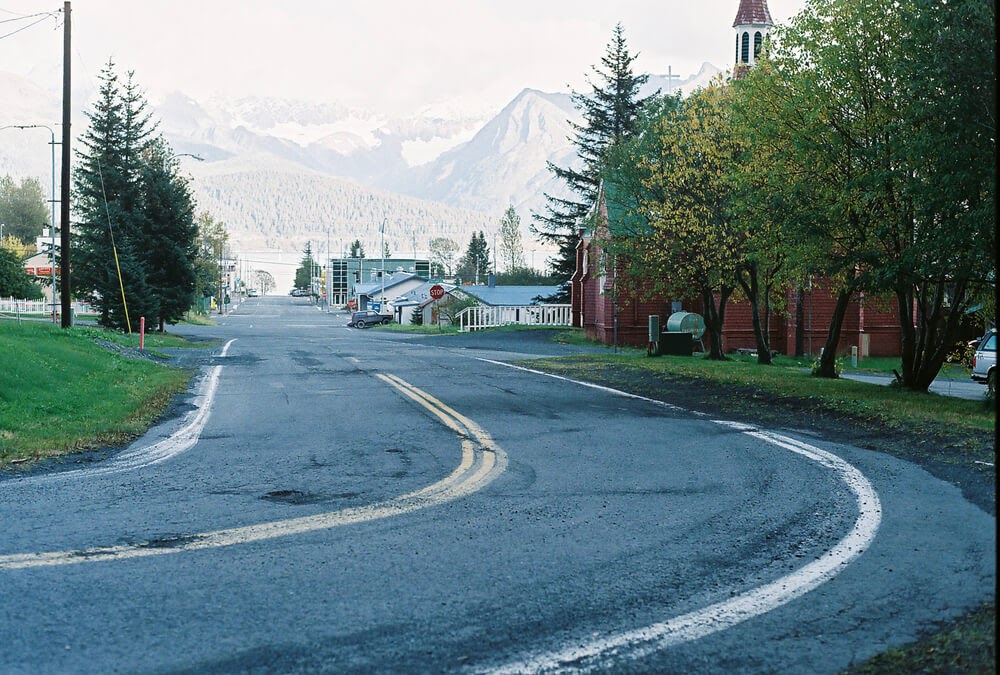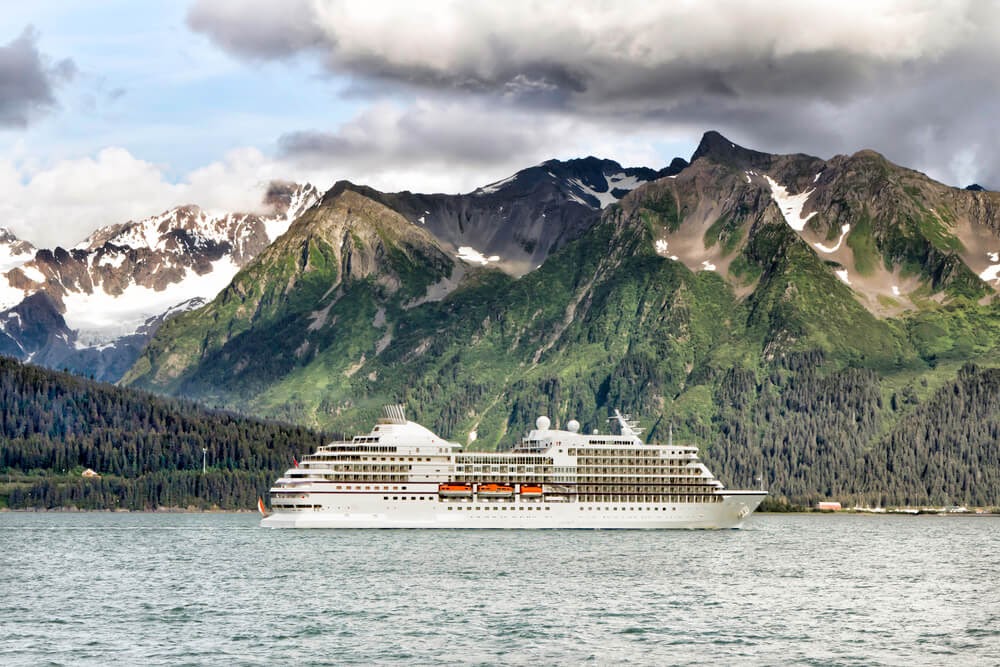Do you remember when Uber and Lyft first came to your city? For many drivers, it was a challenge introducing passengers to the app, navigating the airport, and dealing with unfriendly taxi drivers. Many of those challenges still exist – in Alaska. Below, senior RSG contributor Paula Gibbins interviews two Alaska drivers about what it’s like driving for Uber and Lyft in Alaska, what they wish Uber and Lyft would provide, and how COVID has upended their driving entirely.
Most Uber and Lyft drivers in the U.S. live and drive in the “lower 48” but there’s a whole other world out there for drivers from the relatively mysterious state of Alaska. Alaska drivers face similar struggles as the rest of the U.S., but they also have things unique to their area.
I spoke with two drivers from Anchorage, Evan and Charlotte. Keep reading to learn about what makes driving in Alaska unique, exciting and different from anywhere else.

A Look at Uber and Lyft in Alaska
Uber and Lyft haven’t been in Alaska all that long. Uber originally came to the state in 2014, but only stuck it out for about 6 months before deciding to go away. As of 2017, both Uber and Lyft made an appearance in Alaska and have stuck it out.
Driver Evan started driving for Uber right away and joined Lyft about a year later because of how slow the winters got. Like many locations, Alaska has a tourism season and a slower season. The summer is booming and will keep a driver busy, busy, busy, while winter is more or less people living their regular daily lives.
Anchorage has an airport, a military base and a port. All of these have their own challenges built in. For example, to pick up at the military base, you need a military ID. That greatly limits how many drivers are able to pick up at the base. The airport has a deal with the taxi company, making it difficult for Uber or Lyft drivers to do business.
And speaking of taxi drivers, Uber and Lyft drivers are often harassed by taxi drivers and cut off by them in traffic because of being Uber and Lyft drivers who “took away taxi driver jobs”.
Here’s Charlotte’s take on it:
“Nothing ever stays the same. The cab drivers can either be pissed off about it…or we can embrace that this is change. We’re changing all the time. Nothing is going to stay the same. We have to be open minded.”
What It’s Like to Drive for Uber & Lyft in Alaska
Everyone wants to see Alaska in the summer—or more accurate, no one wants to be in Alaska during the winter. During the summer, Alaska is filled with tourists who are heading out on cruises, going on hiking adventures or just in town to see the boats used in the filming of Deadliest Catch or one of the other many reality shows set in Alaska.
“We’re a bit geographically challenged up here,” said Evan. “There are only a handful of cities we can drive through without going two, three hundred miles.”
Just like everywhere else, Alaska drivers are sure to stay busy during the holidays, as well. Charlotte mentioned that there were definitely not enough drivers out on New Years this last year.
Evan mentioned that he loves the fact that he gets to show visitors the real Alaska. He knows when the beluga whales are going to be around. He has tips and tricks for where to go and what to do. He finds driving for Uber and Lyft to be very rewarding.
Alaska During COVID-19
Charlotte said, “I’ve always kept my car clean. I’ve always wiped it down. I’m always a bit of a clean freak. As soon as the pandemic hit, at first I wasn’t even scared because I had just had two passengers from China in my car two days ago.”
“I still continued to work for the next three weeks, but I was watching more and more fear from passengers,” Charlotte continued.
“People were more scared and they were shutting stuff down real quick. Then I was like I just can’t do this right now. So, I didn’t know if I was going to lose my job with Uber or Lyft but I just said I need to be home with my kids. We all have asthma, we’re all susceptible and supposedly we’re all at risk because we’ve got asthma. So, I quit working for several months. But then because I got screwed over by unemployment and I was scared I was going to lose my job on the platform…I was forced to go back to work.”
Now she uses heavy-duty cleaners to make sure her car is ready for her passengers. “I’ve been cleaning it more. I am having a hard time telling people…I have a lot of people who don’t have masks. I give them a mask and ask them to wear it.”
For Evan, March 17 was his last day driving. “I don’t know. I have enough money financially or I would be out there driving.”
“COVID has destroyed my ridership,” said Evan. If he can’t make at least $100 a day, he doesn’t find driving worthwhile. Lately, he’s been earning only around $30 or $40 a day, so it hasn’t been worth his time to drive.
“I’m getting itchy and I want to go back to work real bad,” Evan explained. “People are just kind of tired of it I think. But I have to be careful. My mom is in a senior center, which is locked down. I added it all up and I just decided I won’t be out there running around being part of the problem. I’m going buggy nuts.”
“We’re all affected in some fashion or way,” said Evan.
What Drivers in Alaska Want
In a word? Representation.
There are challenges unique to their area alone. Being in such an isolated area, the drivers sometimes have to go quite a distance to pick up passengers. With Lyft not paying for a long pickup, drivers often feel the need to cancel on passengers who are far away.
If a driver is not already in the small town where the request originates, that passenger could be waiting for a while before finding a driver willing to get them for what’s likely a minimal fare.
One thing that brothers Charlotte is that Lyft won’t mail her the Lyft amp because Lyft doesn’t mail things to that area – or that’s what she’s been told. There are drivers in the area that display one, but they have purchased them from other drivers outside of the Alaska area.
Another concern when looking at representation—or the lack thereof—at the train station, at the cruise ship ports and the airport. There is no indication that Uber and Lyft is a viable option for transportation. Instead, it’s heavily advertised to use taxis, buses, and private limousine services.
“We’re left trying to figure things out,” said Evan.
“We weren’t very accepted,” said Evan of when Uber and Lyft drivers started driving in Anchorage. “The manager out at the airport would shoo us off.”
With the cruise ships, the drivers are not just hanging around the cruise ships waiting to pick up passengers ready to head back to the airport or into Anchorage for the night. There isn’t a holding lot like Uber and Lyft have for airport runs. Therefore, Uber and Lyft drivers are less likely to be in the area of the cruise ships when needed.

In order to make things work, and to accommodate those people departing the cruise ships, drivers have given out business cards with their phone number on it so passengers can call when they are ready for an Uber. Once the driver gets close enough to Whittier (the town with the cruise ship port), they will start to get the pings of passenger requests.
Otherwise, drivers won’t get a ping because the town is too far away from where the majority of Anchorage drivers are working—Whittier is 60 miles from Anchorage. It’s technically against the rules of Uber and Lyft to do this, but there is no other way to accommodate the needs of those cruise line passengers and workers.
There’s also no Greenlight Hub, which is something many major cities have available to them. Hubs are supposed to act as areas where drivers can go to resolve issues and have questions answered. We all know their online support is difficult to get a straight answer from at times. A Greenlight Hub is an important part that all areas that have drivers deserve.
Charlotte gets frustrated with part-time Uber and Lyft drivers who pitch in during the slow times but not necessarily the busiest times. “These gig jobs have come into my life and they are a blessing,” said Charlotte. “I get frustrated when it’s the slow season; you’ve got people that have full-time jobs, they just do this on the side. Well, I wish they would think about doing it on the side when it’s busy, not when it’s slow. Some of us are doing it full-time and really need this.”
That’s a problem that many full-time drivers have probably felt. There are definitely slower times of the year, and if you’re doing this and only this, it’s hard seeing people who only drive part time and don’t necessarily need the extra money taking away from your livelihood and overall earnings.
Evan simply asks that Uber and Lyft keep the dialogue open and listen to the concerns and challenges of drivers in Alaska.
What is it Like Driving Where You Live?
Every state and even city is very different when it comes to rideshare driving. Some cities are college towns, only busy when school is in session. Some cities are busy almost all the time. And other places are more like Alaska – remote, spaced out, and at times difficult.
Alaska is one of those unique states in the Union where life can be hard and making ends meet more difficult than other states. This is true for rideshare drivers like Charlotte and Evan, too. Clearly, there are many things Alaska rideshare drivers have to navigate in order to succeed, but it’s clear there is a market for Uber and Lyft services in Alaska with all the tourists.
What is it like driving in your state or city? Do you have any questions for Charlotte and Evan about driving in Alaska? Share your thoughts!
-Paula @ RSG




